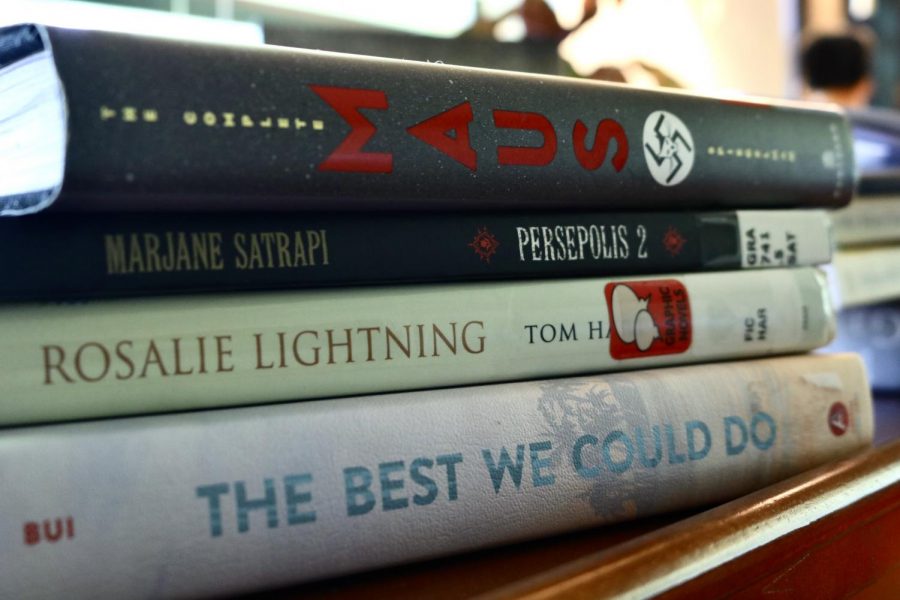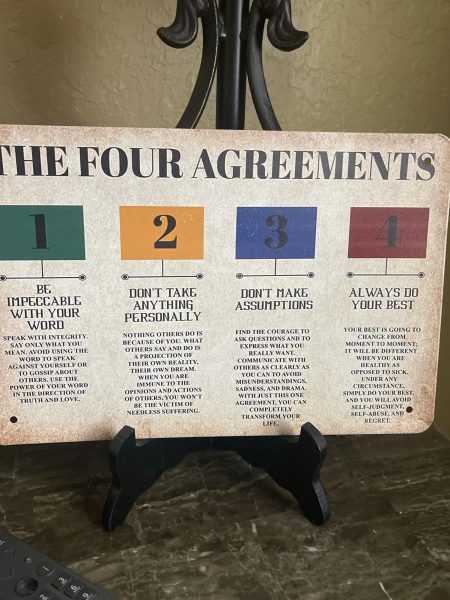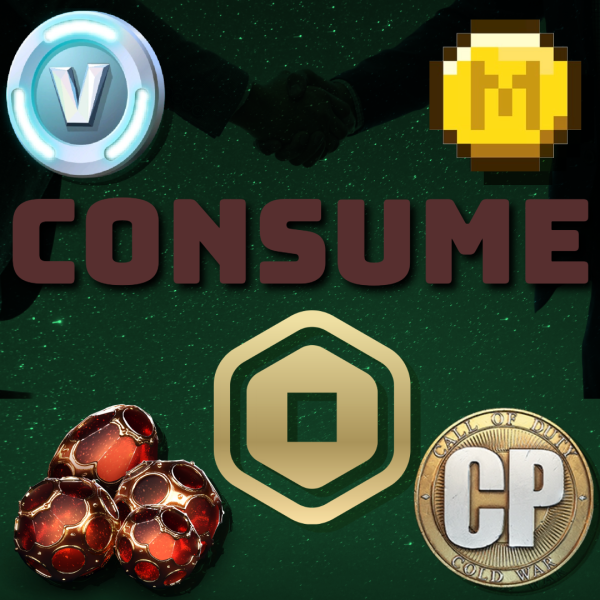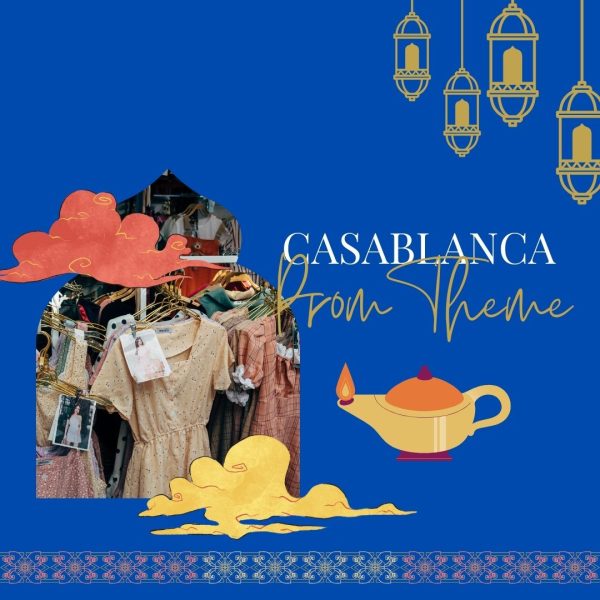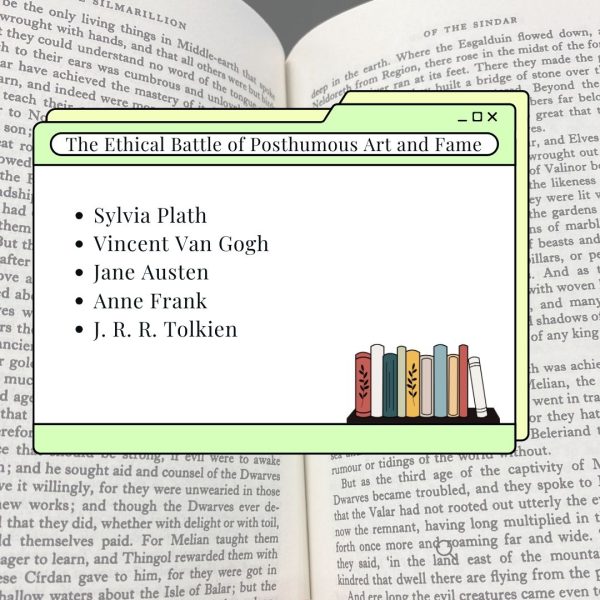5 Graphic Novels Everyone Should Read
A selection of my favorite graphic novels.
December 15, 2020
The term “Graphic Novel” refers to a story, either fictional or non-fictional, that is told in a comic-strip format and published as a book. Graphic novels are commonly confused with comic books, but in reality, the two maintain a variety of differences. Some characteristics specific to graphic novels include their ability to be a stand-alone narrative, which is to say that you do not need to have read a previous book in order for the plot to make sense, as it might in many traditional comic books. Furthermore, graphic novels explore a large breadth of topics, and many of the graphic novels listed here are actually graphic memoirs, meaning they contain true stories from the authors own life. Lastly, graphic novels are generally longer than comic books. This list is comprised of graphic novels that I personally found the most profound and affecting, which I feel best illustrate the power of graphic novels and their legitimacy as forms of literature that can be examined and traversed.
5.) This One Summer by Mariko Tamaki
Canadian author Mariko Tamaki wrote this book in tandem with her cousin Jillian Tamaki, who illustrated it. This One Summer tells the story of friends Windy and Rose, whose families vacation together every summer in Awago. The novel perfectly captures an atmosphere of whimsicality and summer in a small town, and deals with an array of coming-of-age topics such as family issues, friendship, drugs, sex, and teen pregnancy. This One Summer has been banned in many areas for containing, as stated by the ALA, “LGBT characters, drug use, and profanity and being sexually explicit”, but I personally did not find it particularly profane. Tamaki’s novel revels in adolescence in a very quiet way, and tends to focus on inner changes, things rather imperceptible, than action. The plot of the novel serves to inspect a deeper, intangible storyline. This One Summer is a lovely picture of growing up, painted with both light and sorrow alike.
4.) The Best We Could Do by Thi Bui
Bui’s masterpiece, The Best We Could Do is a beautifully written, beautifully illustrated memoir that explores her family’s immigration from Vietnam to the United States when she was young. The art exhibited in the novel is soft and bold, done exclusively in shades of orange and black ink, which adds to the simplicity of it, while still conveying a simultaneously hopeful and heartbreaking message. The Best We Could Do also delves into the history of Vietnam, and discusses the nature of the Vietnamese war, and as someone who wasn’t very knowledgeable on the subject, I found it very educational. Bui begins and ends the novel with the birth of her own first child, and uses this to reflects upon her own childhood, her parent’s childhood, the struggle endured by immigrant families, and her relationship with her parents as an adult– and does so in an exquisite manner. Thi Bui’s The Best We Could Do is an incredible work of art that depicts the complexity of family through an introspective narrative that deserves, and needs to be, read by many.
3.) Rosalie Lightning by Tom Hart
Rosalie Lightning is also a memoir, and focuses on the unexpected death of Hart’s two-year-old daughter, Rosalie. Hart’s book is unequivocally, the most acute depiction of grief that I have ever read. It is deeply affecting, and in many ways, rather haunting. The novel switches between the past and present, depicting how memories change after loss, and the bravery involved in choosing to remember. Hart also portrays how his daughter’s death affected his marriage, and how he and his wife coped with it differently, sometimes grieving together, and sometimes in their own, separate ways. The art of this book is messy, and has a desperation to it that creates a sense of authenticity that pairs with the writing of the book in a beautiful way. Overall, Rosalie Lightning is a portrait of loss in its most raw form, full of despair, heartache, cavernous emptiness shown in pages of desolate black space, and also, hope. Acceptance. Life. I found this book difficult to read, as many portions of it are so delicate, but I’m so glad that I did, for it instills a deeper understanding of grief, and what it looks like.
2.) Persepolis by Marjane Satrapi
Marjane Satrapi is an Iranian-born author, known for her distinct black-and-white art style. Her book Persepolis is written in two parts: The Story of a Childhood and the Story of a Return. The Story of A Childhood details Satrapi’s life in Iran, growing up amid the Islamic Revolution, cutting off just before she is sent to a boarding school in Austria, at age 14. The Story of a Return picks up where the first part left off and depicts her life up unto age 25. Persepolis is a book of great renown, and was even made into a animated film in 2007. Satrapi writes with a succinct straight-forwardness and daring rebellion, pushing boundaries as both a narrator and a character. She approaches taboo topics with bravery and simplicity, reflected in her clean, clear style of illustration that makes this novel such an outstanding piece of work, an archetype for Growing Up that links us all together.
1.) Maus by Art Spiegelman
Maus is, without a doubt, one of the most influential graphic novels of all time. It is the first and only graphic novel to ever receive the Pulitzer Prize. Published in 1980, it was a groundbreaking book, one of the first of its kind. Maus is memoir, told by Spiegelman as the narrator, describing his Jewish father’s survival of the Holocaust. The storyline is multi-faced and tells not only his father’s life, but how this has affected his relationship with his son. Additionally, an extended metaphor is used to illustrate the Jews as mice, and the Germans as cats, giving the book its name. Spiegelman’s Maus is an outstanding piece of literature with layers beyond the depth of the physical pages, and a message of great breadth that still manages to also hit very close to home, especially for any of those with troubled paternal relationships. It is a microcosm for the experiences of so many, and preserves a haunting story in it’s dramatically illustrated panels. Maus paved the way for all of the other books on this list, and remains, in my opinion, one of the greatest graphic novels of all time.

